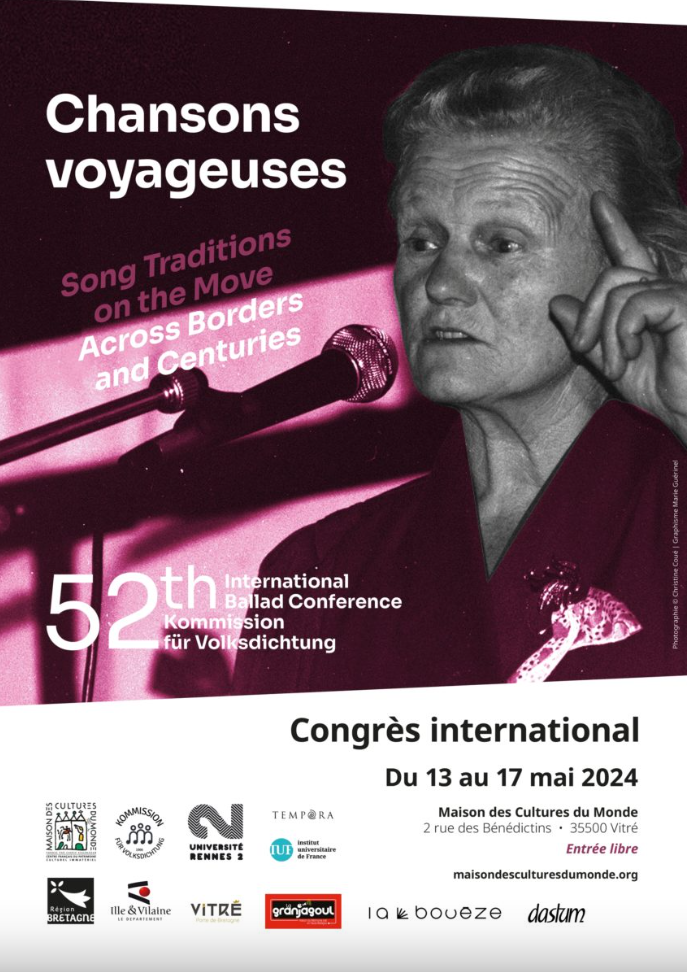52nd Congress of the International Ballad Conference
52nd congress of the Interntional Ballad Conference took place from May 13 to May 17, 2024. The congress, organized by the Kommission für Volksdichtung was held in the medieval town of Vitré in Upper Brittany, France. The French Center for Intangible Cultural Heritage (Maison des Cultures du Monde-Centre français du Patrimoine Culturel Immatériel), and the University of Rennes 2 also participated in the organization of the event.
The title of this year’s conference was “Chansons voyageuses: Song traditions on the move across borders and centuries. The conference focused on the changes, reinterpretations, modernizations, and hybridizations of folk songs that travel through time and space, transcending national, cultural, and linguistic boundaries. A total of 65 papers were presented in twenty-two thematic pannels.
Marjeta Pisk, a member of the Heritage on the Margins research group and an associate at the Institute of Ethnomusicology, presented a paper titled “Oj božime song meandering through time and space«. She discussed the complex issues of the origin, transmission, and political appropriation of a song tradition that the Slovenian heritage discourse canonizes as representative of Venetian Slovenia, despite the fact tjat the song exists in many forms, including as a Friulian lullaby. Three other associates of the Institute of Ethnomusicology also presented their papers. Anja Moric interpreted the difficult Gottschee heritage in the context of emigration, with a particular emphasis on the role of folk songs in preserving the memory of the homeland. Marija Klobčar discussed the intertwining motives of King David and King Matjaž in narrative songs, revealing overlooked aspects of historical connections between Slovenians and Charlemagne through the historical context of Slovenian pilgrimages to Aachen. Marjetka Golež Kaučič presented the love ballad “Stoji, stoji Ljubljanca” or “Zavrnitev vasovalca,” using a comparative analysis of Slovenian and German versions to outline the song’s journey from the German to the Slovenian cultural and linguistic space.
The presentations were accompanied by a cultural program, through which participants became acquainted with the song heritage of Upper Brittany in its diverse forms and styles, both “traditional” and contemporary.

